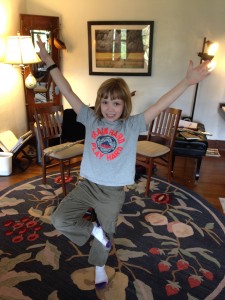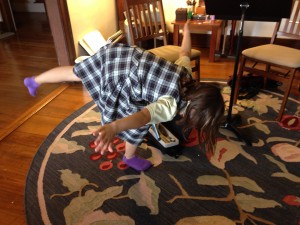Concentration Exercises for Musicians
- Marlene
- Blog, flute, Uncategorized
- 3 Comments
Concentration Exercises for Musicians
Concentration Exercises for Musicians
The prevailing wisdom for many years was that our minds could handle about seven things at once. This was supported by research in 1956 that showed people could remember up to seven numbers, a telephone number being the classic example of seven digits we can commit to memory. George A. Miller’s paper titled “The Magical Number Seven, Plus or Minus Two” was widely accepted. I learned about “Miller’s Law” in Psychology 101.
More recent research is showing that the number of things we can keep in working memory may be a lot lower. Perhaps FOUR. The Magical Mystery Four: How Is Working Memory Capacity Limited, and Why? So, if we can only remember four things at once, we can’t let extraneous thoughts distract us in the practice room.
Musicians have to remember many things at once. Consider that instrumentalists have to control their bodies, monitor the sound, interpret rhythms, translate written pitch to finger combinations, decode other symbols in the music, plan for phrases, and many more complicated processes. As we gain mastery, we are able to shift some of these processes into an automatic reflex, freeing up mental space for adding levels of difficulty. There is very little room in the mind of a musician for externalities like thinking about what we’re going to eat for dinner or being bothered by something that happened earlier in the day.
Monkey Brain
Monkey brain is when your mind is constantly jumping from one thought to the next, like chattering monkeys in the trees. It is the enemy of good practice and musical performance. We know that the brains of musicians are lighting up like fireworks when performing music (see my blog post titled “Brain Imaging on Musicians.“) It takes a lot of mental power to play an instrument. If the brain is thinking about irrelevant details, there is not enough mental capacity for the music.
Monkey Brain is an epidemic. As a music teacher, I work with my students to help them focus on the music. The mind must be quiet and empty before we can fill it with music.
Try these concentration exercises to chase away the monkey brain:
- Breathe through your toes. Place your feet firmly on the ground. Imagine roots are growing through the soles of your feet. Imagine that your toes have little nostrils on them and when you take a deep breath, visualize the oxygen coming in through your toes. This is a great way to feel grounded. The image is silly, but that’s OK. We remember things that are ridiculous and by smiling you are releasing dopamine, the feel-good chemical! (Addicted to Smiling: Can the Simple Act of Smiling Bring Pleasure?)
- Focus the eyes. Pick something small upon which to rest your eyes. You might look at one measure of music, the title of the method book, the barrel of the flute, the brand decal in the center of the piano, your hands in your lap, etc. Begin to draw all your awareness to that place. Breathe. Focus until the image becomes very clear and things in the background begin to recede. Your focal point should now be the brightest and clearest thing in your field of vision. After 30-60 seconds focusing and breathing, close your eyes. When you slowly reopen them, you will find your mind is sharp and ready for learning.
- Crossing the midline. Because music is a full-brain activity, it’s important that the hemispheres are communicating with one another. (*See below for a discussion of the corpus callosum in musicians.) At my kids’ school, the teachers use “Brain Gym” exercises to help the children get ready for learning every morning. Researchers are not convinced Brain Gym has any measurable benefits in the academic classroom but I have found that doing one or two of the crossing the midline activities is helpful for redirecting an unfocused mind in music lessons. Here are two activities for crossing the midline and improving concentration:
- Stand with your ams in “goalpost” or “cactus” position (elbows straight out from the shoulders, hands and fingers pointing up.) Lift the right knee and reach over to touch it with the left elbow. Repeat with the left elbow and right knee. This exercise looks a lot like the ones we do at the gym. Make sure the elbow and knee make contact in the center of the body. Repeat several times.
- Stretch your arms straight out, cross right under left and flip the palms. Now interlace the fingers and draw the hands down and toward your body. This is hard to describe but this short video will give you the idea.
With your fingers interlaced, wiggle your right hand thumb. Choose another digit like the left hand ring finger or right pinky. It’s harder than it might seem. This is a good exercise to try with teen and adult students who might feel silly standing up and touching their elbows to knees like the first activity.
- Yoga balance poses. Use these exercises to bring balance, physically and mentally, into your practice. There are many good balance poses in yoga. Here are two that my flute students seem to enjoy:
- Tree. Stand with knees slightly bent. Check that the ears are over the shoulders, shoulders over hips, hips over ankles. Find a place to rest your gaze on the floor a few feet ahead of you. Shift your weight onto the right food, being mindful that the weight is evenly distributed through the whole foot. Place your left foot in a comfortable spot on your right leg (either above the knee or below but not on the knee.) Rotate your left leg so the knee is pointing to the left and gently press your standing leg into the left foot. When you feel balanced, raise your arms. If you’re feeling playful, you can make your branches grow tall in the sun or sway in a gentle breeze. Take a deep breath and release on an exhale. Repeat with the other side.
- Airplane. Begin standing as for “tree pose” described above. Shift the weight into the left foot and hinge forward at the hips. Keep your eyes focused on a spot on the floor to help with balance. Extend the right leg straight out behind you, foot flexed. Bring the arms out to the sides in a “T.” Keep the neck and spine in a comfortable alignment. Hold for as long as comfortable, taking deep breaths. On an exhale, pivot back to standing and repeat with the other side.
Parents, if you notice your child is having difficulty paying attention to the music or if he explodes in conversation after each exercise, you can help by suggesting these activities. Do the exercises with your child and you’ll both get the benefit. Remember, the tricks that work today may not be the ones that work tomorrow so try out all the ideas and see which ones are best for your child.
Our minds are filled with all kind of thoughts. As musicians, we have to be extra vigilant about making sure our minds are focused on the challenging tasks of playing a musical instrument. A little mental hygiene in the practice room will help also. I always silence my phone when practicing and say to myself “I am practicing now. This is the most important thing I can be doing at this moment. Everything else will wait until I am finished.” When a distracting thought comes, I imagine that it is being surrounded by a bubble and floating away. For persistent thoughts, I keep a note pad handy. Once I write something down, I no longer have to carry it in my mind.
When you notice that your mind is wandering, take a moment to try some of the exercises listed above. I’d like to hear about which ones work for you. For more ideas about how yoga can improve your music practice, check out the book Musician’s Yoga by Mia Olson.
*The underlying science – that performing an activity that simultaneously engages both cerebral hemispheres can improve cognition – does appear to be true. The best studied example of this is musicians who began training during early childhood. Neurons on either side of the cortex send axons across the midline, which then make synapses with neurons on the other side. The axons are covered in a white substance called myelin, which acts as an insulator, protecting the electrical communication between neurons from leakage, and increasing the speed at which the signal can travel down the axon. This collection of axons between the midline is called the corpus callosum, and research has shown that the corpus callosum is larger in early-trained musicians compared to late-trained musicians and nonmusicians, especially if the training began before the age of 7.
The hypothesis is that because musical training involves the coordination of multiple modalities – i.e. taking visual and auditory input (reading and listening to music, respectively) and coordinating it with motor output (playing the instrument) – the connections between these brain areas become stronger and more tightly connected, resulting in better sensorimotor integration. And indeed, early-trained musicians have better spatial and verbal memory, attention, mathematics skills, and perform better on other tasks involving the integration of multiple sensory and motor inputs…. encouraging your students to learn an instrument could go a long way in improving their cognitive functions.” (from NeuWrite West — Ask a Neuroscientist.)


3 comments